Complete Solutions to Section D - Chapter End Test of chapter ELECTRIC CHARGE, FIELD & FLUX of Class 12 book with complete answers and questions
| Class 12 | PHYSICS |
| Chapter | ELECTRIC CHARGE, FIELD & FLUX |
| A2Z | Section D - Chapter End Test |
| Number Of Questions | 29 |
| Academic Year | 2023-24 |
The charge on `500 c c` of water due to protons will be
View SolutionA soap bubble is given a negative charge, then its radius
View SolutionFour charges are arranged at the corners of a square `ABCD`, as shown in the adjoining figure, The force on a positive charge kept at the centre `O` is
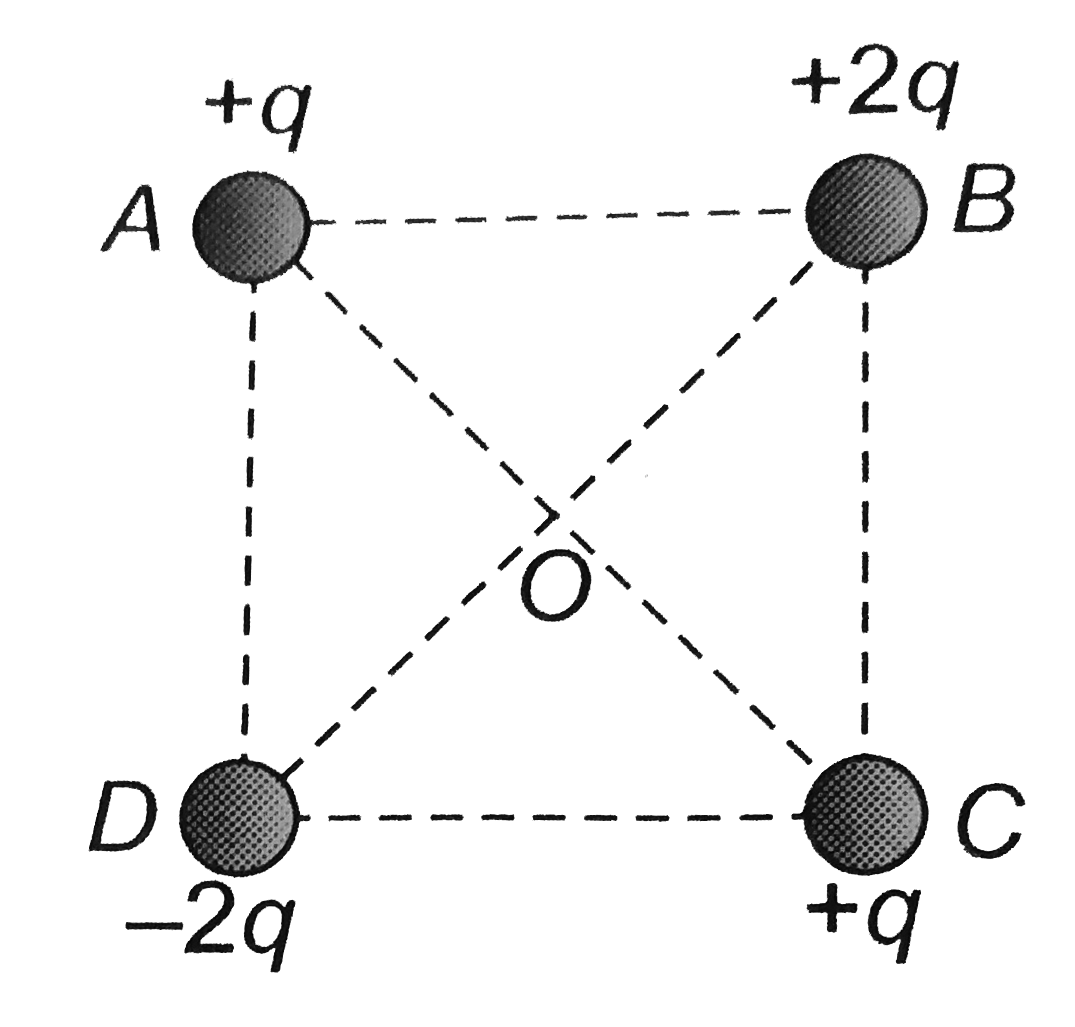
View Solution`+2C` and `+6C` two charges are repelling each other with a force of `12N`. If each charges is given `-2C` of charge is given `-2C` of charge, then the value of the force will be
View SolutionThree charges `-q_(1), +q_(2)` and `-q_(3)` are placed as shown in the figure. The `x`-component of the force on `-q_(1)` is proportional to
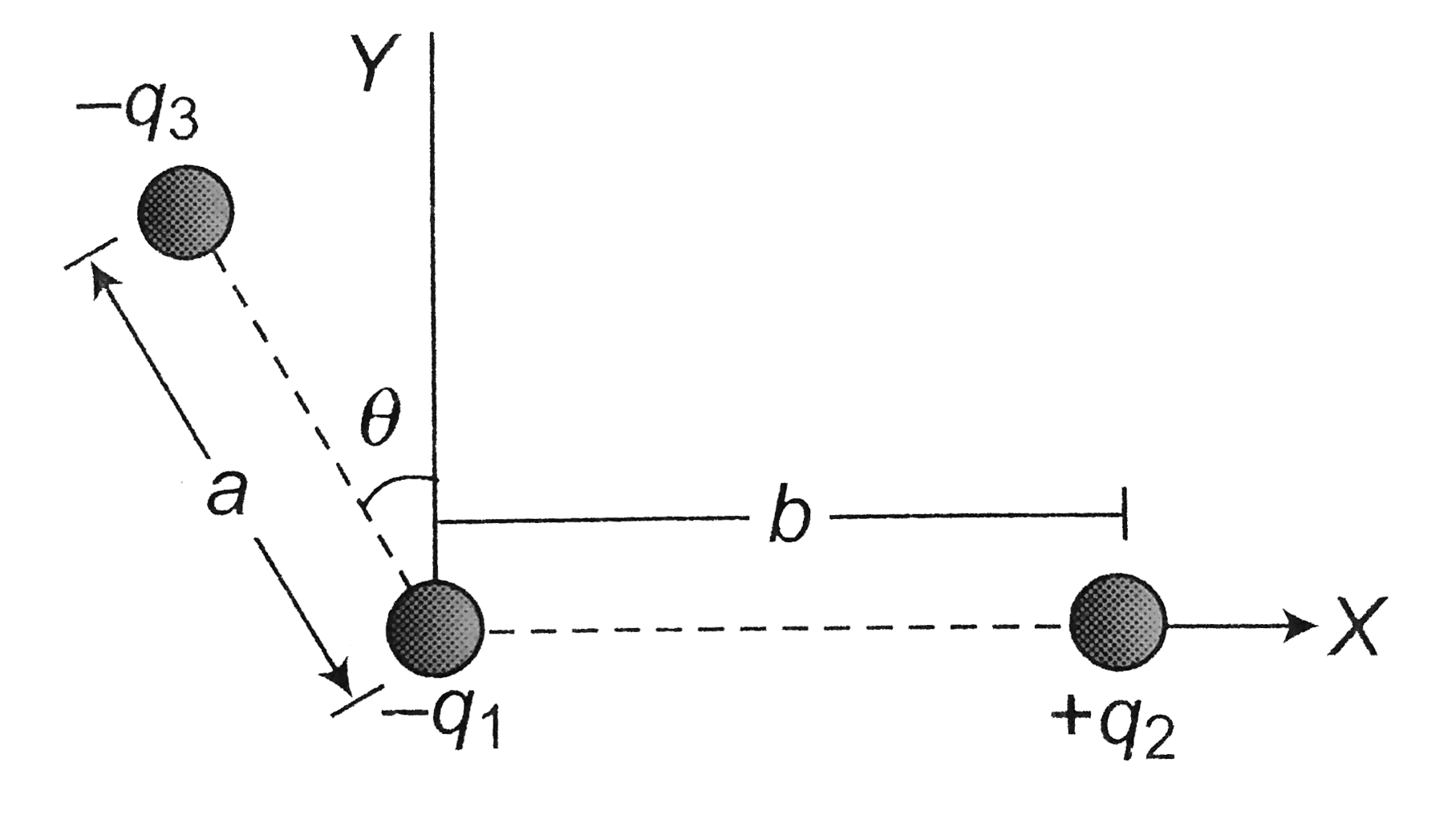
View SolutionTwo metal pieces having a potential difference of `800V` are `0.02 m` apart horizontally. A particle of mass `1.96xx10^(-15) kg` is suspended in equilibrium between the plates. If the `e` is the elementary charge, then charge on the particle is
View SolutionThe electric field in a certain region is acting radially outwards and is given by `E=Ar. A` charge contained in a sphere of radius `'a'` centred at the origin of the field, will given by
View SolutionTwo equal charges are separated by a distance `d`. A third charge placed on a perpendicular bisector at `x` distance will experience maximum coulomb force when
View SolutionA solid conducting sphere of radius `a` has a net positive charge `2Q`. A conducting spherical shell of inner radius `b` and outer radius `c` is concentric with the solid sphere and has a net charge `-Q`. The surface charge density on the inner and outer surfaces of the spherical shell will be
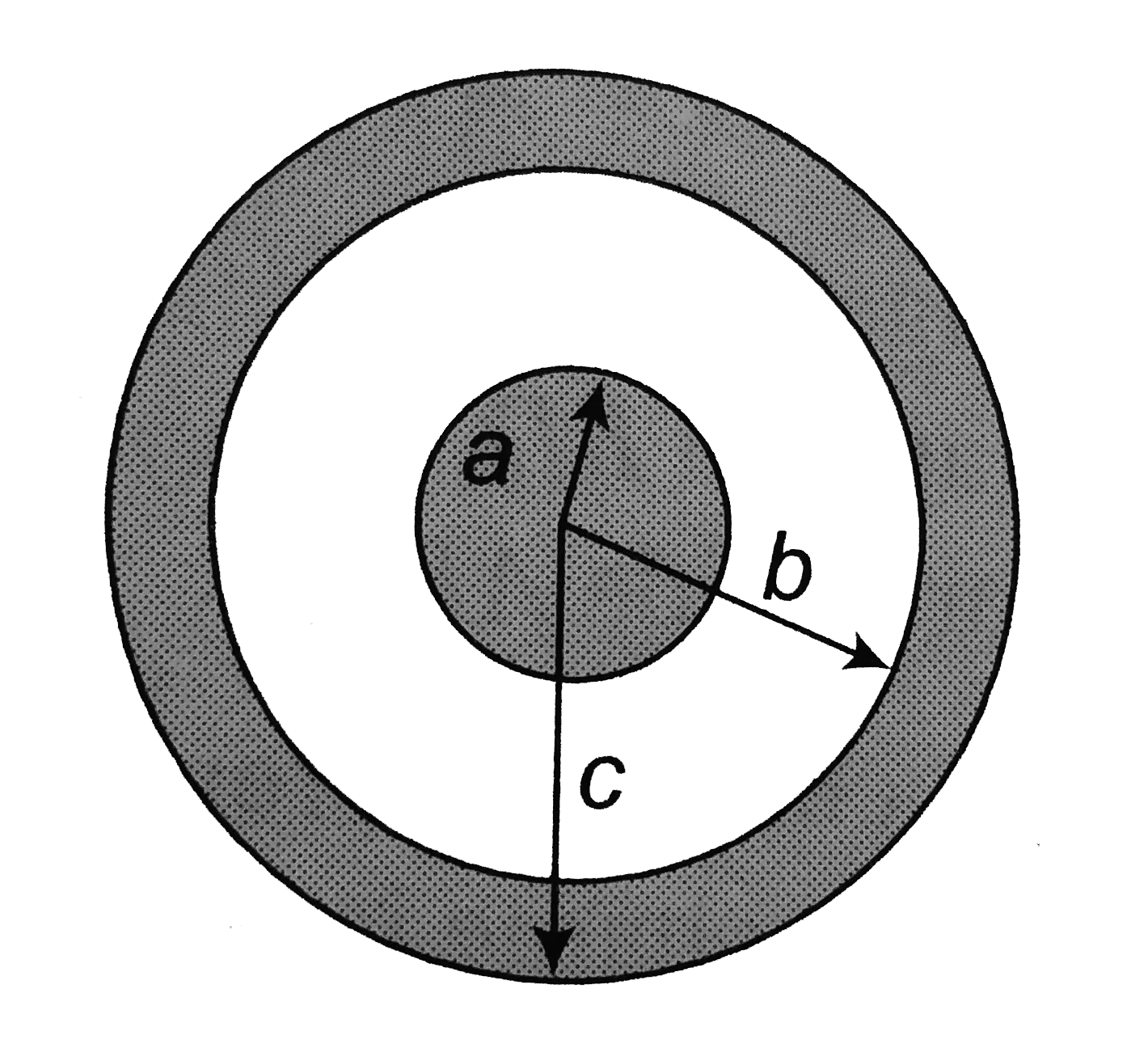
View SolutionTwo small spheres of masses `M_(1)`and `M_(2)` are suspended by weightless insulating threads of lengths `L_(1)` and `L_(2)`. The spheres carry charges `Q_(1)` and `Q_(2)` respectively. The spheres are suspended such that they are in level with one another and the threads are inclined to the vertical at angles `theta_(1)` and `theta_(2)`respectively . Which one of the following conditions is essential for `theta_(1) = theta_(2)` ?
View SolutionThree similar charges `+q` are placed on `3` corners of an equilateral triangle `ABC` of side `a`. How many minimum charges should be placed on a circle of radius `a` with centre at `A` so that resultant force on the charge placed at the centre is `(q^(2))/(4pi epsilon_(0)a^(2))` along `x`-axis?
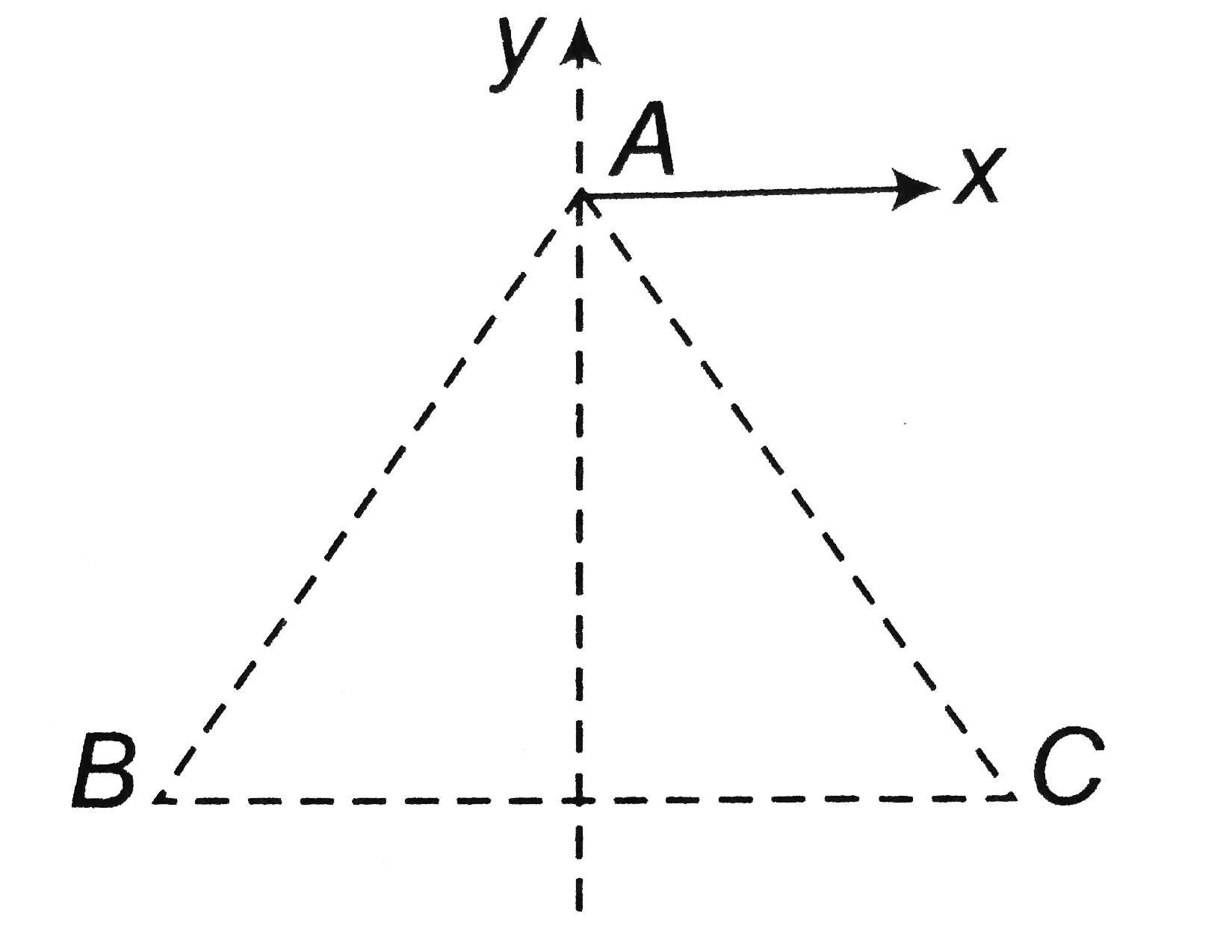
View SolutionA solid metallic sphere has a charge `+3Q`. Concentric with this sphere is a conducting spherical shell having charge `-Q`. The radius of the sphere is `a` and that of the spherical shell is `b(bgta)` What is the electric field at a distance `R(a lt R lt b)` from the centre
View SolutionThe following diagram shows the electric field lines between two opposite charges. The positive charge is indicated by the black circle, the negative charge by the white circle. An electron string from rest at the indicated position `(X)`, and accelerated to high speed by the electric field will follow most likely which trajectory?
View SolutionThe magnitude of electric field intensity at point `B(2,0,0)` due to dipole of dipole moment, `vec(p)=hat(i)+sqrt(3)hat(j)` kept at origin is (assume that the point `B` is at large distance from the dipole and `k=(1)/(4pi epsilon_(0)))`
View SolutionAn electric dipole is placed in a uniform electric field `vec(E )` of magnitude `40N//C`. Graph shows the magnitude of the square on the dipole versus the angle `theta` between the field `vec(E )` and the dipole moment `vec(p)`. The magnitude of dipole moment `vec(p)` is equal to:
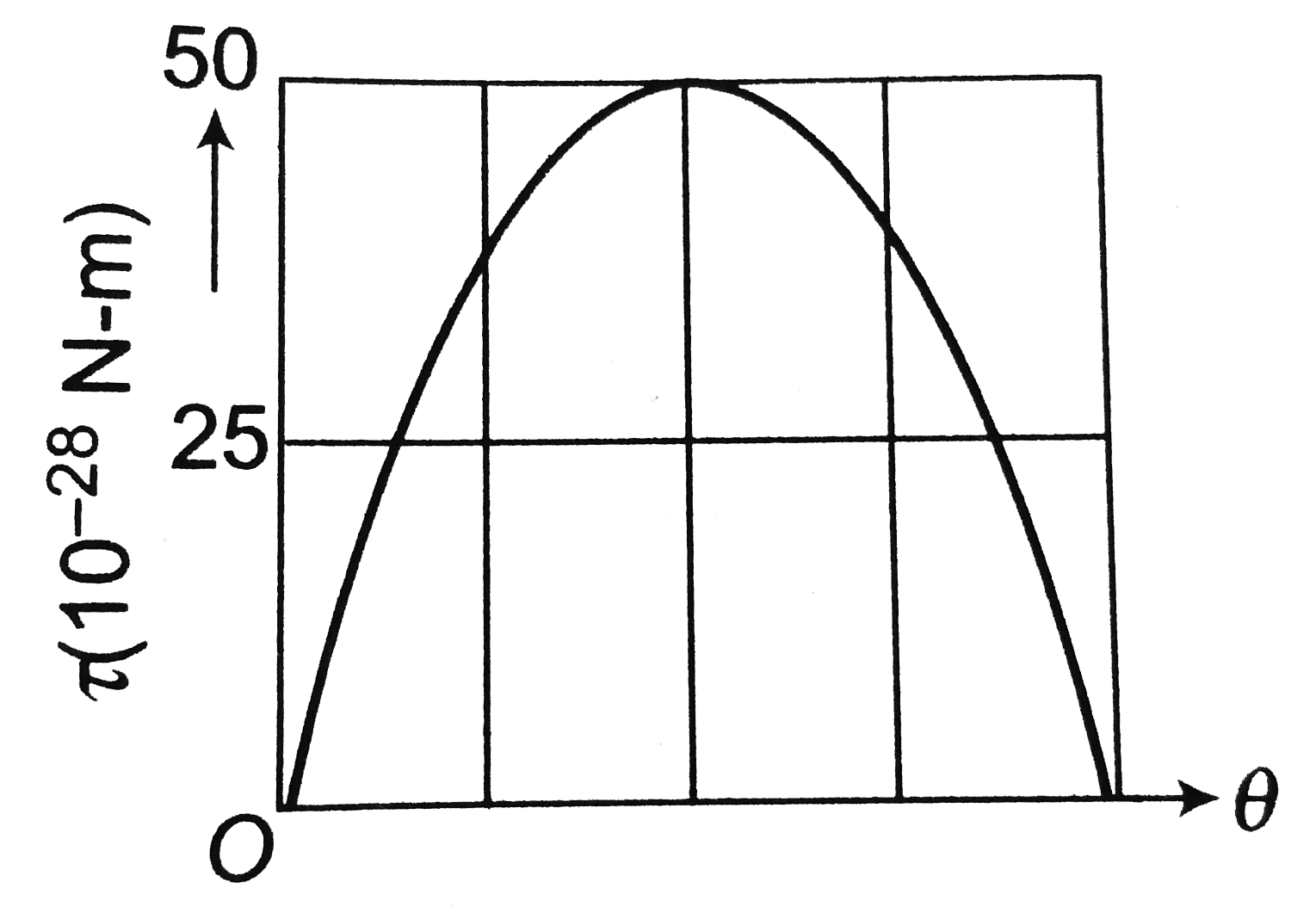
View SolutionTwo infinitely large charged planes having uniform suface charge density `+sigma` and `-sigma` are placed along `x-y` plane and `yz` plane respectively as shown in the figure. Then the nature of electric lines of forces in `x-z` plane is given by:
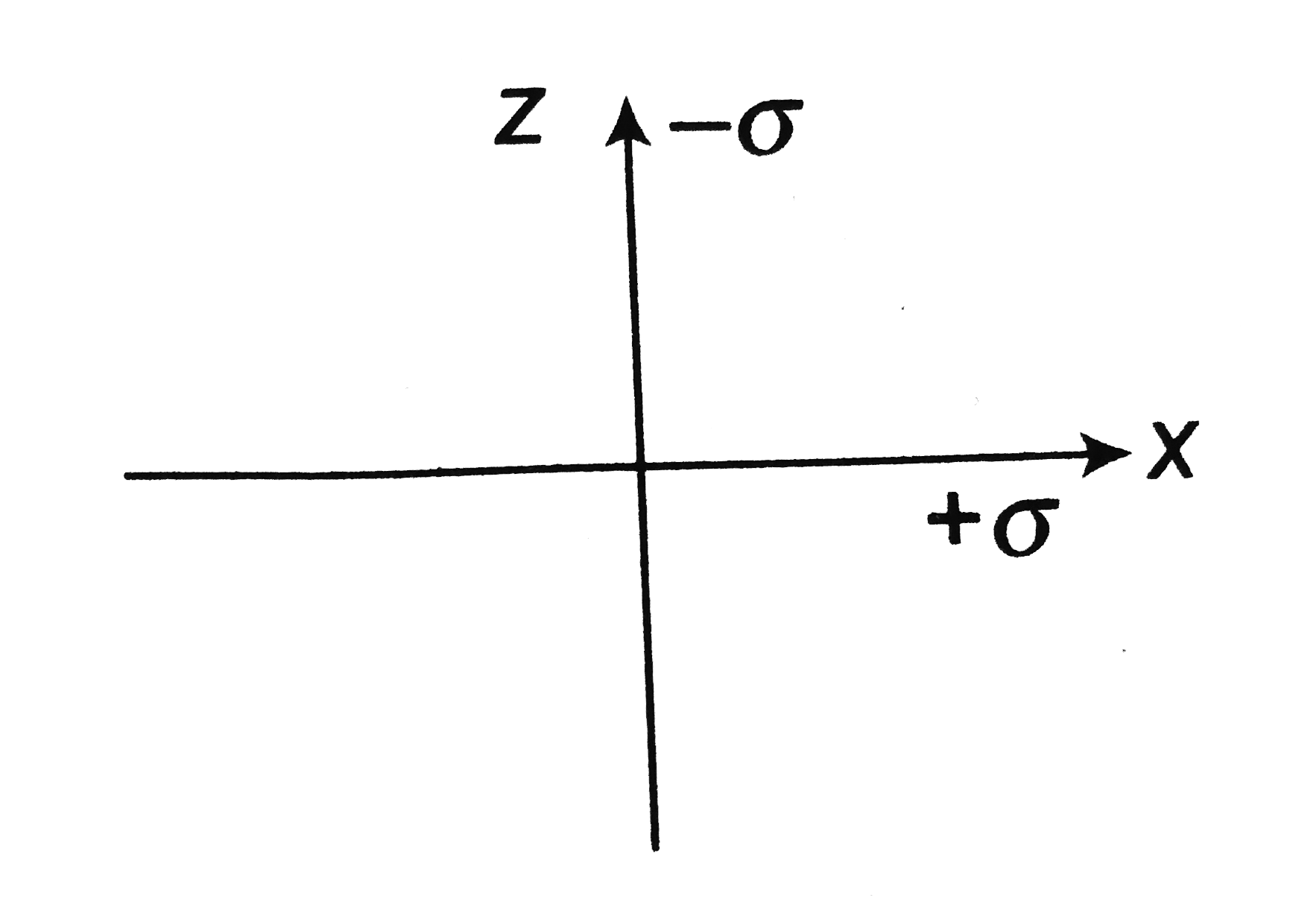
View SolutionFigure, shown above, shows three situations involving a charged particle and a uniformly charged spherical shell. The charges and radii of the shells are indicated in the figure. If `F_(1),F_(2)` and `F_(3)` are the magnitudes of the force on the particle due to the shell in situations (I),(II) and (III) then
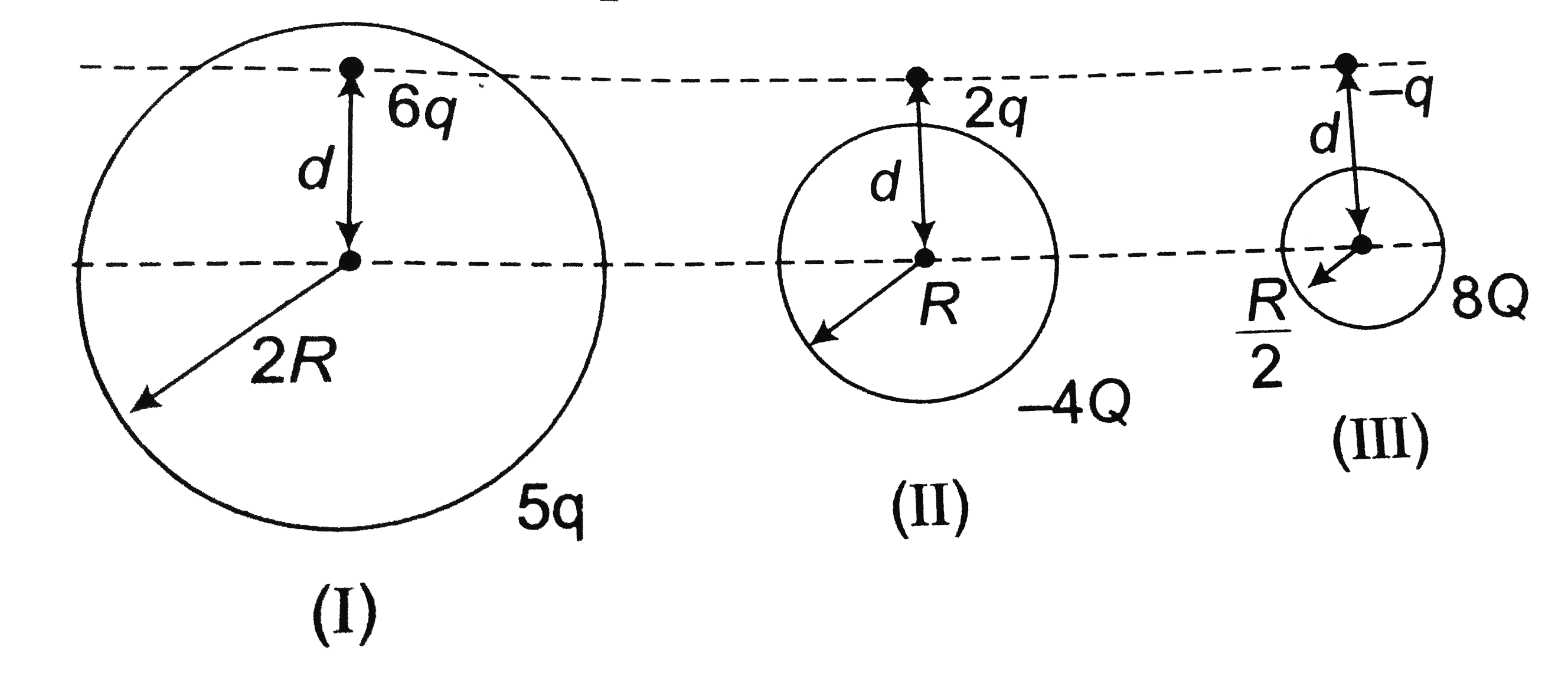
View SolutionThere are three concentric thin spheres of radius `a,b,c (agtbgtc)`. The total surface charge densities on their surfaces are `sigma,-sigma,sigma` respectively. The magnitude of the electric field at `r` (distance from centre) such that `agtrgtb` is:
View SolutionA `alpha` particle is released from rest `10 cm` from a large sheet carrying a surface charge density of `-2.21xx10^(-9)C//m^(2)`. It will strike the sheet after the time. `(in_(0)= 8.84xx10^(-22)C^(2)//Nm^(2))`
View SolutionA ring of radius R has charge `-Q` distributed uniformly over it. Calculate the charge that should be placed at the center of the ring such that the electric field becomes zero at a point on the axis of the ring at distant R from the center of the ring.
View SolutionIn a figure shown find the ratio of the linear charge densites `lambda_(1)` (on semi-infinite straight wire) and `lambda_(2)` (on semi-circular part) that is, `lambda_(1)//lambda_(2)` so that the field at `O` is along `y` direction.
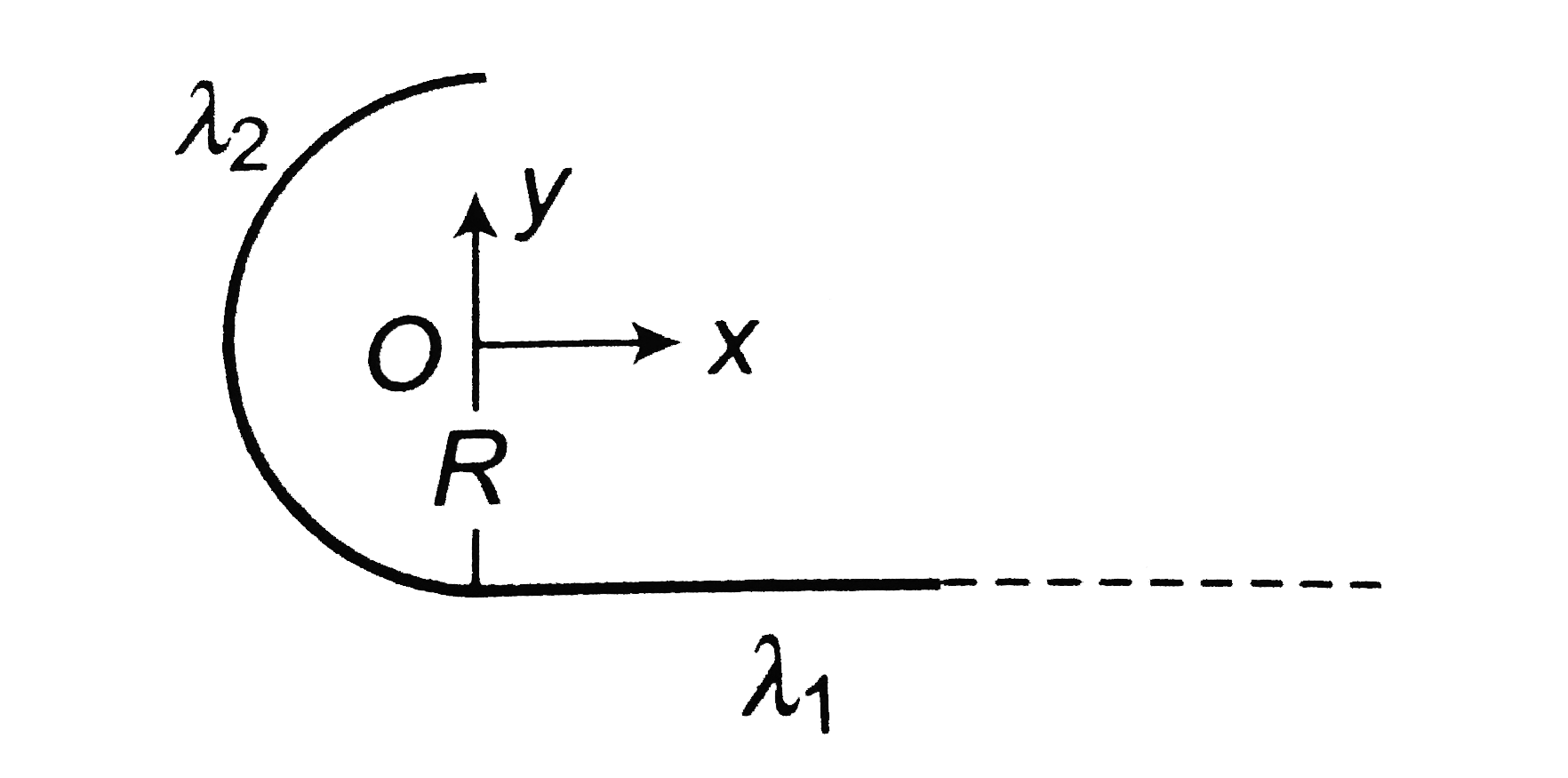
View SolutionA sphere of radius `R` carries charge such that its volume charge density is proportional to the square of the distance from the centre. What is the ratio of the magnitude of the electric field at a distance `2R` from the centre to the magnitude of the electric field at a distance of `R//2` from the centre?
View SolutionA point charge Q is located on the axis of a disc of radius R at a distance b from the plane of the disc (figure). Show that if one-fourth of the electric flux from the charge passes through the disc, then `R=sqrt3b`.
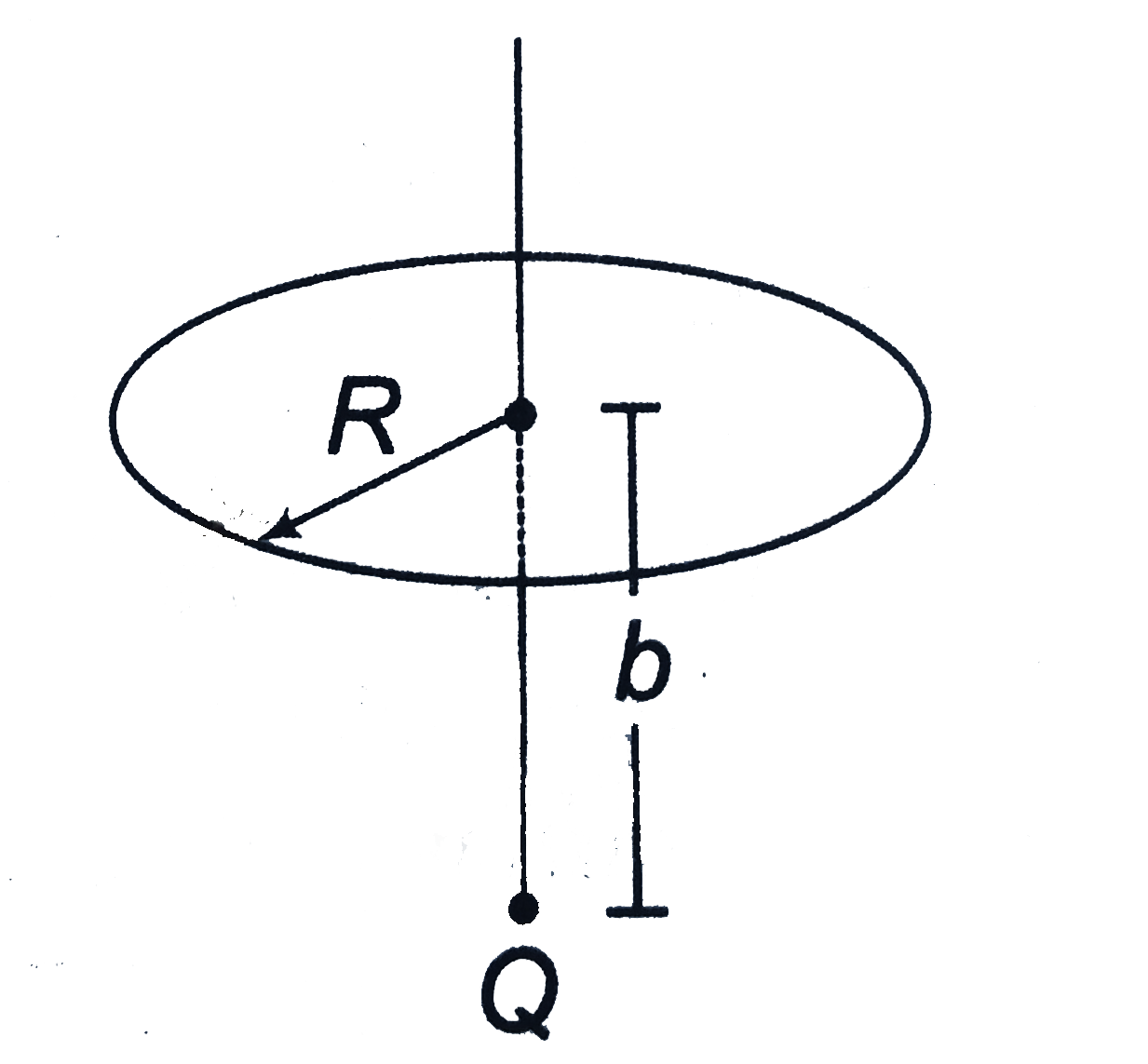
View SolutionIt has been experimentally observed that the electric field in a large region of earth's atmosphere is directed vertically down. At an altitude of 300 m, the electric field `60 Vm^(-1)`. At an altitude of 200 m, the field is 100 V m^(-1), the field is `100 Vm^(-1)`. Calculate the net amount of charge contained in the cube of 100 m edge, located between 200 and 300 m altitude.
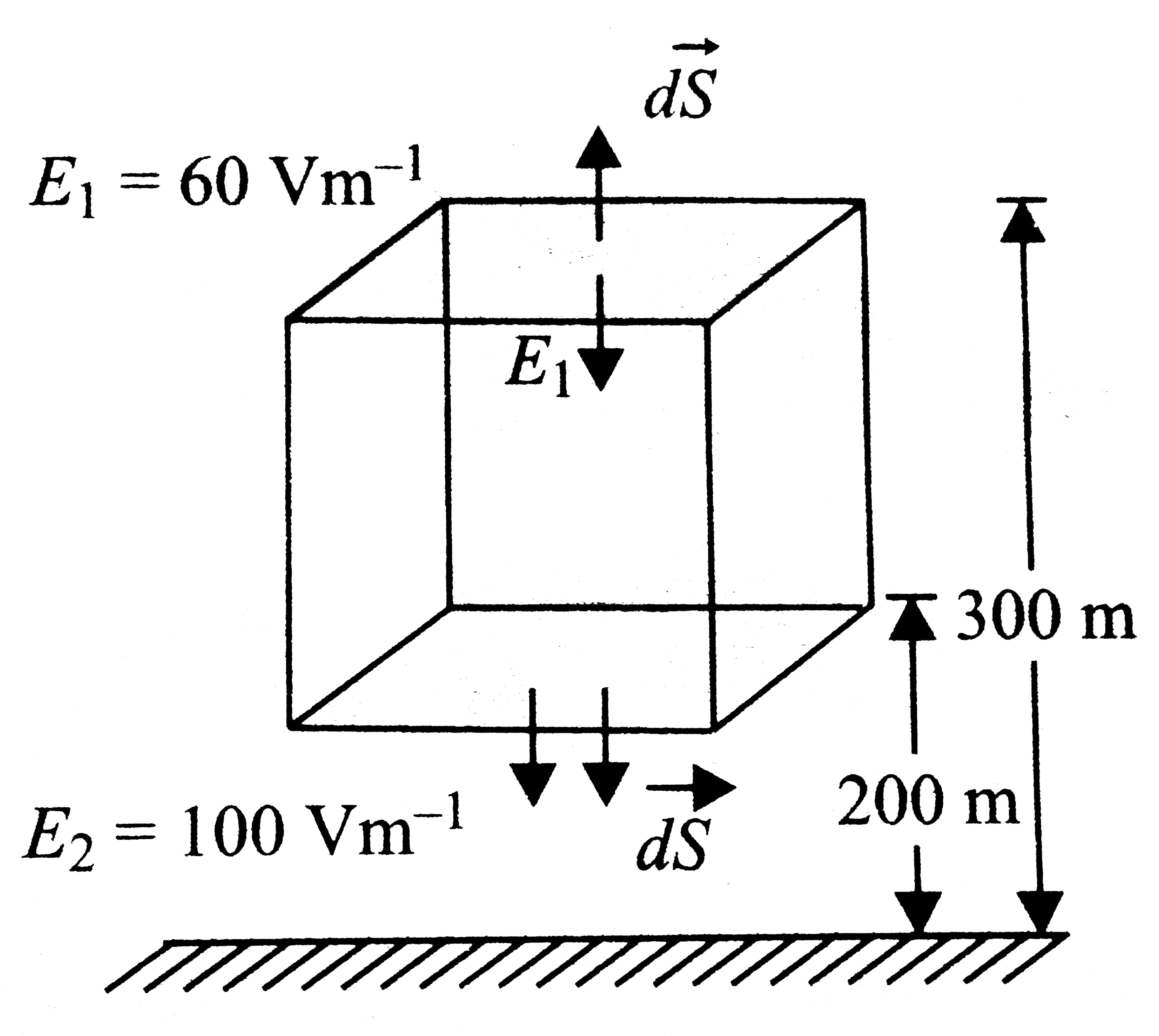
View SolutionA metallic shell has a point charge 'q' kept inisde its cavity. Which one of the following diagrams correctly represents the electric lines of forces?
View SolutionThree poistive charges of equal value q are placed at the vertices of an equilateral triangle. The resulting lines of force should be sketched as in
View SolutionAssertion: A charged by cannot attract another uncharged body.
Reason: Oppositely charged boils attract each other.
View SolutionAssertion: A charge particle is free to move along electric field. It does not move along an electric line of force?
Reason: Its initial position decides that it will move along the line of force or nor.
View SolutionAssertion: Column's law can be derived from `Gauss's law.
Reason: Gauss's law can be derived from Coulombs law.
View Solution
Section D - Chapter End Test questions and complete solutions for chapter ELECTRIC CHARGE, FIELD & FLUX of A2Z PHYSICS (HINGLISH) of Class 12